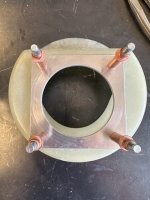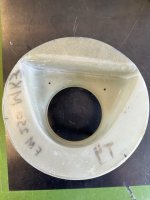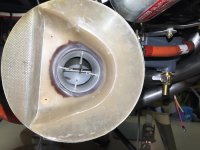You are absolutely right about not wanting anything to have a chance of going through the engine, so I'm going to copy your design. I was looking at how Dave Hock had designed his intake, and that's where I came up with the idea to bond them together. He sure does some nice work!! I understand how you used the small angle to attach the flow inlet and the back housing.....I'm going to copy your design there, too. I am designing the alternate air the same way Dave did his (thanks Dave for posting your pics!!).
I have the ability to machine the an aluminum plate to pretty precise angles to line up the servo inlet. I'm going to attempt to to this, and if I can't, I'll do it the same way you have done yours with using the flox.
Thank you so much for posting your picture and for the explanation. It helps a lot!! Great craftsmanship on your work, it looks really nice!








